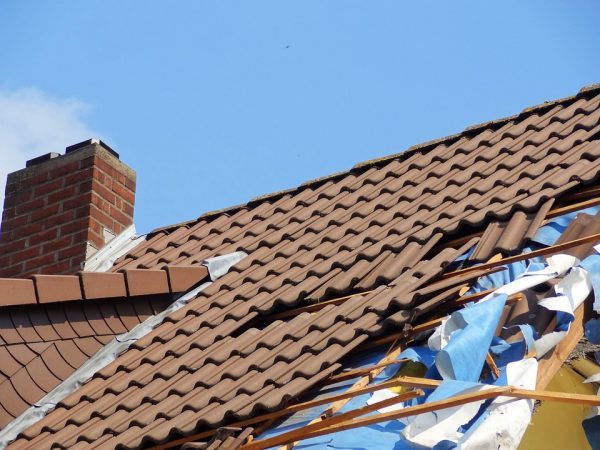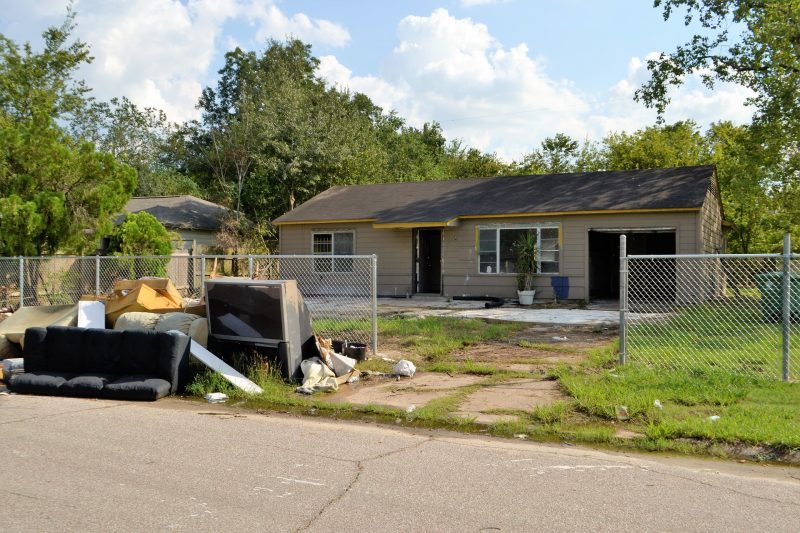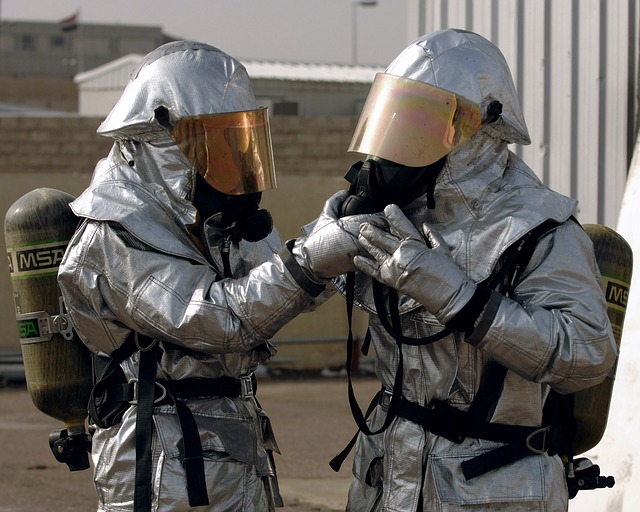Month: December 2017

The Shocking Revelations to Prevent Sewer Backup
As a homeowner or renter, there is little worse than nasty sewer backup. The smell wafts up through your basement door, followed by the nausea-inducing sight of sewer water standing a foot deep on your basement floor. Or, you reach the bottom step only to discover sewer backed up in your floor drain, toilet, and shower. Sewer backup is a health hazard. The bacteria found in these waters is not something that you want to clean up yourself. Of course, the smell and sight would probably be enough to have you reaching for the phone in the first place.
Reasons for Backup
Why does a sewer backup? One of the main reasons for a sewer backup and flood in your home is an issue with your city sewer system. Another potential reason is a blockage in your sewer lines. If your basement floods every time you experience a heavy rain, your city’s sewer system is likely the culprit. On the other hand, there is a chance that it is something on your end. You could have a tree root growing into your sewer line, causing you issues when you attempt to drain water out of your washing machine, dishwasher, or even your toilets. These skills are generally above the skillset of a honey-do list.
Insurance
The unfortunate thing about sewer backup is that a lot of time your insurance doesn’t cover this casualty. However, if they do and you put in for a claim, you still aren’t out of the water. Many insurance agencies will not continue to insure you after you’ve had a claim for a sewer backup. On the other hand, there are some insurance agencies that will still insure you, but they may reduce the amount that you are insured for, refuse to renew your insurance, or increase your deductible. Insurance agencies consider two issues with this type of sewer backup. The first is that it is likely to occur again if it does it once. The second is the biohazard of what is involved in a sewer flood is a liability.
Prevention
What can be done to prevent your home from getting flooded with sewer water? To prevent a sewer water crisis in your home, you should have a professional install a double- or triple-valve system that protects your home from sewer backup. These systems can be installed in your yard and are mostly undetectable. The valves will be placed inside your sewer lines. When water begins to come towards the valves, they automatically close and will keep your basement from flooding.
Maintenance
Another strategy that you can employ while researching why your sewer originally backed up in the first place is to have a professional check your line for damage on a yearly basis. What do the professionals look for? They look for a deterioration of the lines, for cracks, obstructed lines, and collapsed lines.
Contact Insight Restoration Now
In conclusion, if you frequently have sewer backup in your home, you need to have a professional evaluate your set up and provide you with assistance if needed. A basement filled with sewer water is extremely dangerous. Before attempting to clean up, you must turn off the electricity to prevent shock. If you need assistance in determining what is going on with your sewer lines, contact Insight Restoration. Insight Restoration is an experienced industry leader. To get started with preventing sewer water from flooding your basement, call 208-427-2962.

Five Common Myths about Asbestos Removal
Is your home at risk of causing you asbestos exposure? People normally think of houses built in the 60’s or earlier as those homes or buildings that place us at a greater risk. However, homes built as early as the 1990’s have asbestos in some of the building materials. Not to mention, several products in your home currently could be exposing you to asbestos. Examples of these items include older appliances, crockpots, hair dryers, and stove mats.
Reduce Risk
So, what can you do to reduce your risk of developing cancer from asbestos? You should replace any old appliances with newer ones. Moreover, you should have your home professionally tested. If asbestos is found, let the experts get rid of it for you as it can obviously be dangerous to be exposed to asbestos. Let’s explore some myths about asbestos removal.
Construction
The first of the asbestos removal myths is regarding construction. While the asbestos in your home might not be causing a significant risk if undisturbed, the minute you start a construction project for a home remodel, you will stir it up and allow it to be breathed in. What items in your home might put you at risk of exposure? Some of the building materials that contained asbestos include flooring, shingles, tiles, and roofing. During the construction period, your family should vacate your home to prevent exposure.
Smoking
The importance of not smoking around asbestos cannot be touted enough. Whether you are near the asbestos, or the experts are, do not smoke in the area. Smoking is unhealthy on its own. However, smoking when asbestos is around can increase lung cancer risk by 50-90%. Even if you smoke at your own risk, secondhand smoke is just as dangerous to others when around asbestos.
Removal
During the actual removal of discovered asbestos, it can become powdery and breathed in. As a result, any time you would like asbestos tested for or removed, you need to speak with an expert in the removal of asbestos rather than attempting a do-it-yourself project.
Symptoms
Once the removal is complete, you may not be out of danger yet. If you did the project by yourself or an unprepared person did the removal, the dangers may still be lurking in your home. In these cases, it is important to learn the symptoms of asbestos exposure. Some symptoms include a persistent cough, a cough with phlegm, unexplained weight loss, difficulty to breathe, and loss of appetite.
Small Doses
The last of the asbestos removal myths is that small doses are not dangerous. This is not the case. No matter what the size is of the asbestos, the substance is dangerous. Even small doses have been linked with mesothelioma.
Contact Insight Restoration Now
In conclusion, if you fear that your home has asbestos, you need an expert to evaluate the materials in your home. A home with even a small amount of asbestos can be dangerous to its inhabitants. If your home was built before the 1990’s or you’re concerned that a building material contains asbestos, you should call an expert to help you with the removal process.
Insight Restoration is one such expert in this field. We can help you determine if your family is at risk and present a plan for removing any dangerous substances. Insight Restoration is an experienced industry leader. To get started with asbestos removal, call 208-427-2962.

Six Tips for Storm Damage Cleanup
Property damage from relentless weather and storms can be disastrous on homes and business premises. Storm damage cleanup can be a daunting task. The most common mistake regarding storm damage is calling your insurance company first. While calling them within a certain window of time is important, there are also some things you should do before picking up the phone.
First, you should call a high-quality, reputable storm damage restoration company such as Insight Restoration. We will fully inspect your property to find exactly what damage the storm left behind. We often find damage that insurance adjusters overlook. By having a full report and inspection on hand before an adjuster arrives on your property, you avoid missing out on repairs that should have been covered. Below are six tips to help with immediate storm damage cleanup:
Extract Water
With a heavy storm comes heavy rains and possible flooding and water damage. If water comes into your home, it’s essential to remove all water carefully. Let your sump pump do its job, then remove the rest of the water with a wet vac or mop. Clean any drains that are covered in debris and vacuum the water from them as well.
Keep Air Circulating
Once the storm subsides, you need to find a way to keep air circulating in your home. Open vents and windows and set a fan to keep fresh air flowing through rooms. The quicker everything dries, the less potential there is for mold, mildew, and permanent damage. A dehumidifier will also help remove damp air and facilitate the dry-out process.
Check for Leaks
Survey the inside of your home to see if there are any water spots on ceilings or near chimneys. This is a sign of additional roof problems, including compromised shingles or inadequate flashing. Also, check for leaks in appliances and around the foundation of your home.
Fix Broken Glass
High winds and flying debris might have shattered a window or door in your home. If the window is cracked or only partially broken, inspect the pane and surrounding frame to assess whether the window is stable as-is. If the window shattered, try to determine how far the glass scattered to evaluate how big your cleanup area will be. Look for glass shards or particles behind furniture, within cushions, and on top of furniture surfaces — not just on the floor.
Clean with Disinfectant
A storm can bring in a variety of contaminants from sewage to chemicals. Be sure to clean floors, walls, and furniture with disinfectant. Even a solution of warm water and bleach will work.
Tarp and Board Up
When done correctly, covering your roof and boarding up holes in your home caused by storm damage can save you a lot of money. Leaks will be contained, animals will be kept out, and your risk of unnecessary vandalism will decrease. Utilizing board-up or tarp-over services from a trained professional can keep your overall repair costs, as well as stress levels, down.
Taking time to address a broken window or damaged roof immediately can save you thousands of dollars in the long run. For a fast response with professional results, call Insight Restoration today at 208-427-2534 or visit us online at www.insightrestoration247.com.

Why You Should Tarp or Board Up Property Damage
When a disaster strikes, it can be devastating for you and your family. Years of hard work and fond memories can be wiped out in an instant as the result of fire, tornado, or hurricane. As a result, it can be hard to look at your home and not want to walk away, saying, “What’s it matter? The damage is already done. Why bother to tarp or board up damage?”
However, walking away is not a good decision for you to make. There are several different reasons why walking away is not the right option to take.
Prevent Further Damage
The first reason to tarp or board up damage is to prevent further damage. Your home may have sustained substantial damage, but if it is not a total loss, tarping and boarding up your home can prevent further damage. When rain or snow piles in through an open area, continued damage will occur. You could also see further damage from animals getting in through any open areas and further tearing up your home. By tarping or boarding up your damage, you can prevent this from occurring.
Continued Insurance Coverage
The next reason to tarp or board up damage is for continued insurance coverage. Some insurance policies will not cover further damage caused after the original event occurs. As a result, you neglecting to protect your home from further damage could result in your policy not being enforced. It is important to do everything you can to prevent further damage from occurring to your home while waiting for repairs to be made.
Prevent Vagrants
When you leave a portion of your home open to the public, you may get more than a few unwanted animals. You may also get some people who decide to squat in your home or rummage through your personal belongings to take what they can make a quick sell through stealing.
Liability
If an uninvited person were to enter your damaged home and somehow get injured, you could still be found responsible for his or her injuries. The last thing you need is to pay for someone getting hurt on your property in addition to dealing with the damage to your home.
Preparation
There are other times when you should consider tarping and boarding up, like when there is an anticipated natural disaster looming around the corner. For example, there is usually ample warning prior to a hurricane hitting landfall. If you know in advance that a hurricane is coming, you should have your home tarped and boarded up. By doing so, you can potentially save your home from receiving damage.
Get Help
It is dangerous to tarp or board up after a home has endured a fire or storm damage. If you are to do it yourself, you must be sure that the potential for harm is a low risk. Otherwise, you must contact an expert.
Contact Insight Restoration Now
Experts in tarping and boarding are ready to assist you in your time of need. They want to see you preserve your home until proper repairs can be made. Not only can tarping and boarding prevent further damage to your home, it might be a requirement to keep your insurance active.
Insight Restoration is an expert in the field of storm damage cleanup and storm preparation. Insight Restoration is an experienced industry leader. To get started, call 208-427-2962.

What You Should Wear for Asbestos Testing
In the early 1800’s until 1978, asbestos was commonly used in building materials. Asbestos is a natural mineral composed of small, microscopic fibers that serves as a highly effective insulator. When exposed to chemicals or heat, asbestos does not break down. It does not conduct electricity, and it can buffer against noise as well.
Asbestos lurking in materials poses no risks unless you disturb it. When it becomes dust and microscopic fibers are released into the air, asbestos becomes extremely dangerous. It is crucial to have a professional examine your home or demolition project for asbestos testing. Otherwise, inhaled particles can cause lung-scarring illnesses and even lung cancer.
Because asbestos can’t be seen with the naked eye, you must submit materials to an EPA-certified laboratory for testing prior to a remodel. Even removing a sample to send to the EPA requires stringent precautions. At Insight Restoration, we have over 50 years of collective experience in asbestos testing and removal. We never recommend trying to remove asbestos yourself but if you feel that you will come into contact with it, please take notice on how to dress:
Require Protective Gear for Asbestos Testing:
- Disposable facemask
- Respirator
- Safety goggles (eye protection)
- Hard hat
- Disposable rubber gloves
- Disposable coveralls or long sleeves and long pants
- Shoe covers
- You’ll need to discard all items, except respirator, once complete.
Tips for Wearing Protective Gear
- Wear larger size clothes to easily move around
- Tape loose cuffs to seal
- Do not tuck overall or pants into boots
- Cover respirator straps with a hood
- Wear safety footwear without laces
- Wear disposable slippers over boots and remove before leaving the contaminated area
One common misconception about protective gear from asbestos is wearing a simple mask. Most masks are not going to protect your or your loved ones from the deadly fiber. A basic face mask that you can purchase at a home improvement store will offer very little protection. Asbestos dust and fibers can easily get around the edges of these types of masks, which puts your health at risk.
To safely work around asbestos, you need a half-face respirator that completely shields your nose and mouth and seals tightly against your skin. A properly fitted respirator will purify the air you breathe and block asbestos fibers from entering your nose or mouth. However, a high-quality, respirator-type mask alone is not enough to protect you from asbestos if you are in an area where asbestos has been disturbed by removal efforts, construction, renovation, flood, or fire.
Asbestos fibers can cling to your clothing, skin, shoes, or hair. It’s crucial that you coat yourself properly in protective gear when exposed to asbestos. Second-hand exposure to asbestos can have health consequences that are just as serious as it is for those directly exposed to this carcinogen.
If you find asbestos on your property, the key is proper removal. Choose a certified and experienced asbestos abatement contractor such as Insight Restoration. Our trained crews can successfully abate your property in a reasonable amount of time, providing a safe and habitable space in the future. Call us today for assistance at 208-427-2962.

